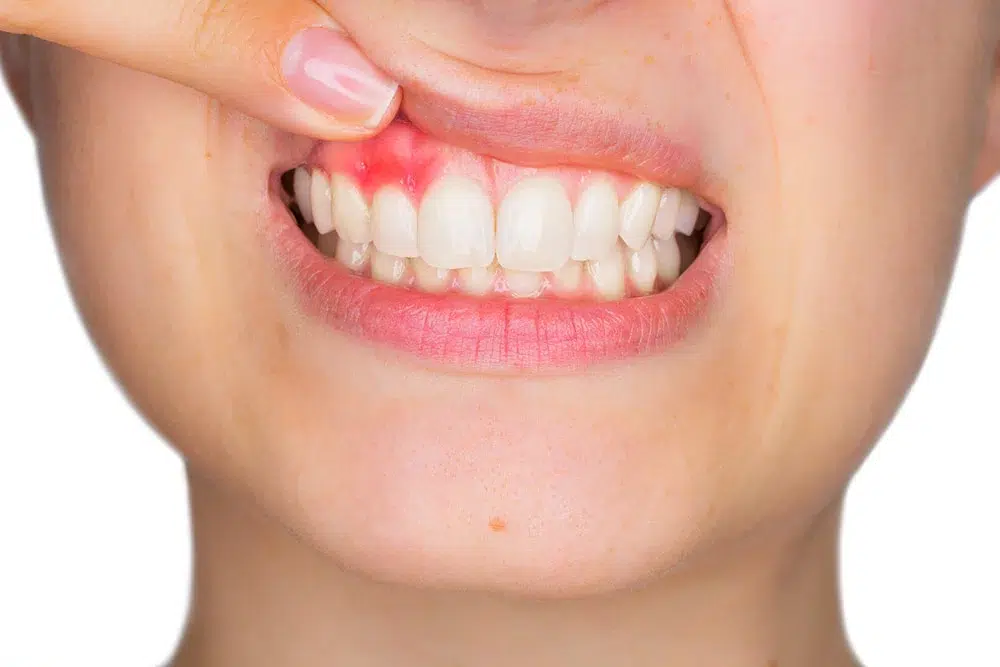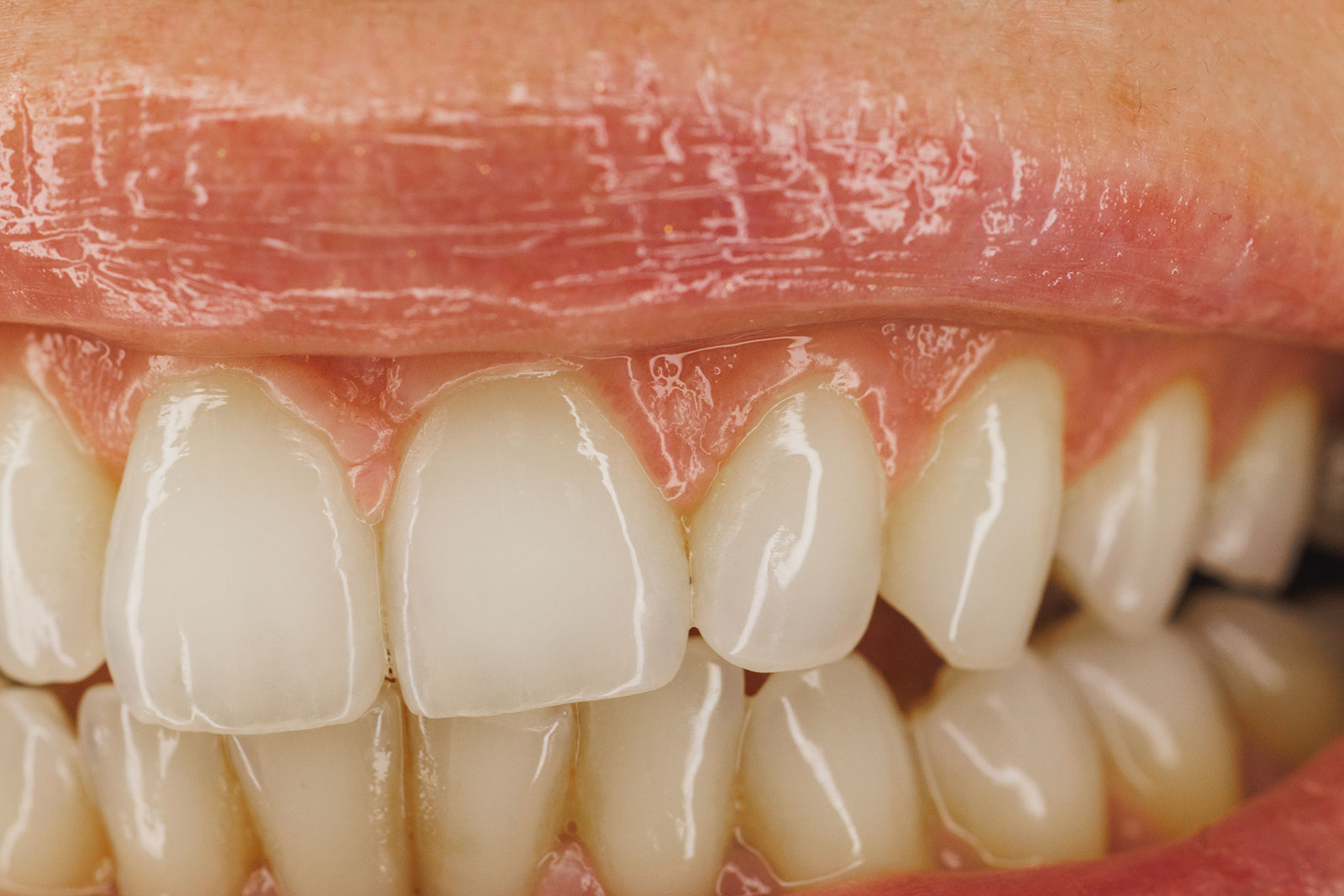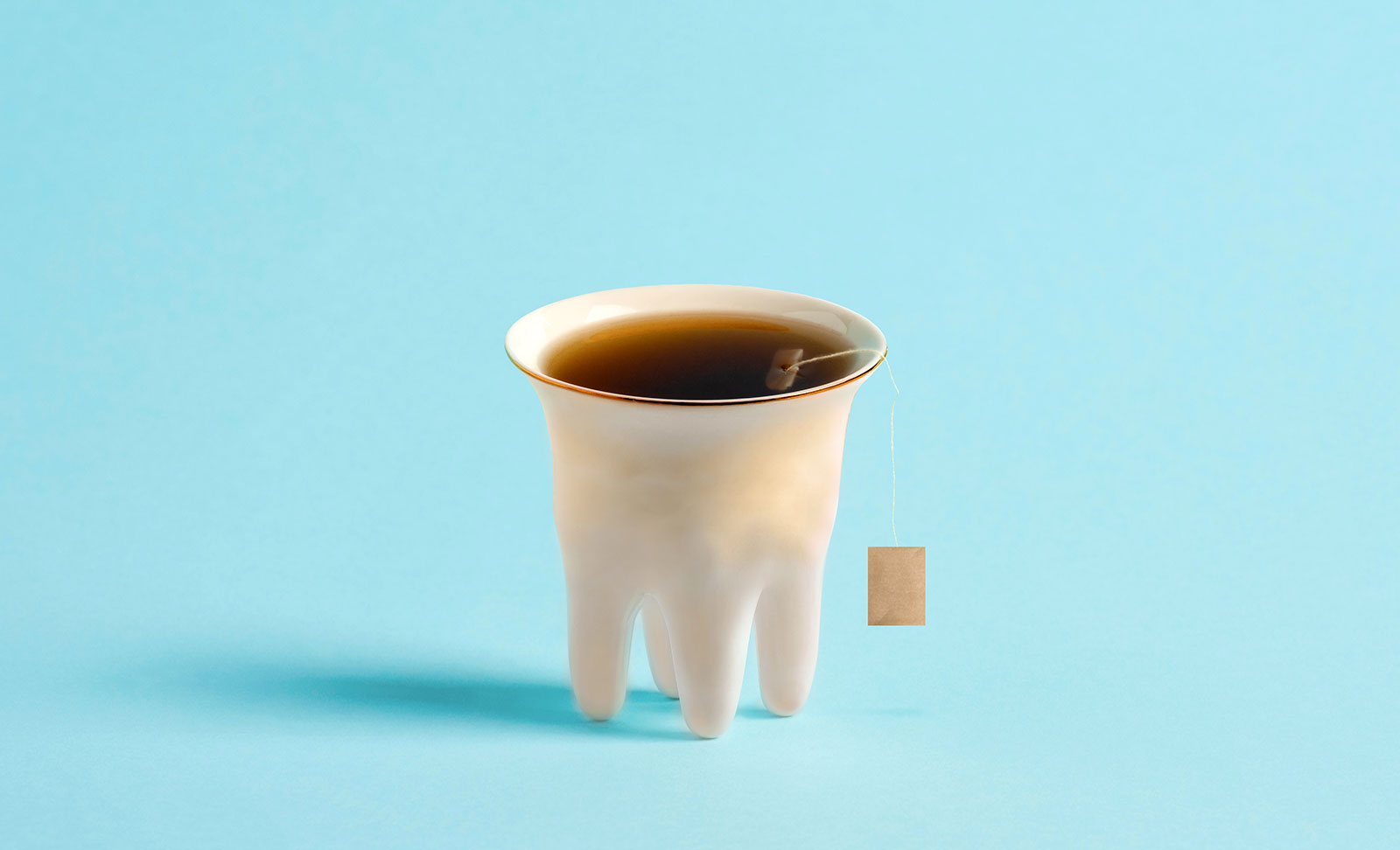Introduction
The smile is one of the most important features of our appearance, and many people consider it a reflection of their overall health and well-being. However, there are those who, when smiling, feel that they show excessive gums, which is known as gummy smile. Aunque esta condición no es una enfermedad, puede generar incomodidad en algunas personas que desean una sonrisa más estética. La sonrisa gingival se refiere a la exposición excesiva de las encías al sonreír, algo que puede influir en la confianza y la percepción de la imagen personal. Afortunadamente, existen tratamientos eficaces que pueden corregir esta condición, y en este artículo exploramos sus causas, implicaciones y las opciones disponibles para mejorar la estética dental.
What is the gummy smile?
The gummy smile is a condition in which more gum than usual shows when smiling. In an “ideal” smile, the upper teeth are expected to take center stage, with a slight exposure of the gums on the sides. However, in some cases, the upper lip rises too high, showing more gingiva than would be considered aesthetically harmonious. This excess gingival exposure can be mild or severe, and in some cases, sufferers feel self-conscious, affecting their self-esteem.
It is important to clarify that the gummy smile is not a health problem, but an aesthetic condition. However, those who experience this problem often seek solutions to improve the appearance of their smile. This is because, in many cultures, a pleasing smile is associated with a proper tooth-to-gum ratio.
Causes of gummy smile
Gummy smile can be caused by several factors, and its origin is usually related to genetics, facial anatomy or oral health problems. The following are the main causes that can lead to this disorder:
1. Excess gingival tissue
One of the most common causes of a gummy smile is excess gum tissue. excess gum tissueThis causes the gums to cover a larger portion of the teeth. In some people, the gums are naturally thicker or longer, leading to greater exposure when smiling. In these cases, the esthetic problem lies in the shape and size of the gums.
2. Hypermobility of the upper lip
The hypermobility of the upper lip is another contributing factor to a gummy smile. Some people have an upper lip that rises higher than normal when smiling, causing more gums to be exposed. This condition, often related to increased facial muscle elasticity, can cause the upper lip to move more than expected, revealing excess gum.
3. Altered dental eruption
In some cases, the teeth may not have fully erupted or may be smaller than normal. This causes the gums to appear more prominent compared to the teeth, especially when the patient smiles. This altered tooth eruption may be linked to genetics or problems during dental development.
4. Jaw or bite misalignments
A misaligned bite or jaw position problems can also contribute to a gummy smile. If the upper jaw is disproportionately forward or irregularly shaped, it can cause the upper lip to lift more when smiling, thus showing more gum.
5. Muscular factors
The muscle tone of the facial muscles that control the movement of the upper lip play an important role in the gummy smile. In some people, the muscles in the upper lip area may be particularly strong or overactive, causing the lip to lift excessively when smiling.
6. Genetics
Finally, genetics also influences the shape and size of the gums, as well as the mobility of the upper lip. Individuals with a family history of gummy smile may be predisposed to develop this condition due to inherited factors.
Why correct the gummy smile?
Although a gummy smile does not pose a threat to dental health, it can significantly affect a person’s self-esteem and confidence. An “ideal” smile is associated with a harmonious proportion between the teeth and gums, and when this proportion is altered, some patients may feel uncomfortable or insecure when smiling. In addition, excessive exposure of the gums can make the teeth appear smaller or make the smile look disproportionate.
Gummy smile correction, in many cases, has both esthetic and psychological benefits. By improving the proportion between the teeth and gums, patients experience an increase in confidence, which positively impacts their social and professional lives. There are several treatment options that can help correct this condition and restore the desired esthetics to the smile.
Gummy smile treatments
There are several treatment alternatives for gummy smile, and the choice of the appropriate option depends on the underlying cause and severity of the condition. The most common and effective treatments are described below.
1. Gingivectomy (Gum Surgery)
One of the most effective solutions is the gingivectomyThis procedure consists in the elimination of excess gingival tissue. This surgical intervention is performed under local anesthesia and allows reducing the amount of exposed gum when smiling, achieving an esthetic balance between teeth and gums. The procedure is relatively simple and the results are usually long lasting. However, some recovery time is required, which may include a period of swelling and mild discomfort. If you have problems with swollen gums, it is advisable to learn more about the symptoms and treatments of gingivitis or inflamed gums.
2. Botox for gummy smile
The use of botulinum toxin (Botox) is a less invasive option that has gained popularity in cosmetic dentistry. By injecting Botox into the muscles of the upper lip, its mobility can be reduced, resulting in the lip not lifting as much when smiling. This treatment is ideal for those who have hypermobility of the upper lip and are looking for a quick, non-surgical solution. The effects usually last from 3 to 6 months, so it is necessary to repeat the treatment periodically. If you have any doubts about the effects of Botox and other aesthetic solutions, see our article on halitosis: causes, symptoms and treatments.
3. Orthodontics
In some cases, orthodontics can be helpful in correcting dental alignment and bite problems that contribute to a gummy smile. Through the use of invisible brackets or aligners, the teeth and jaw can be repositioned, improving both the aesthetics and functionality of the smile. This treatment is especially appropriate when the gummy smile is related to a misaligned bite. If you would like to know more about the types and applications of orthodontics, we invite you to read our article on invisible orthodontics: what it is, types, differences and applications.
4. Orthognathic surgery
When the problem lies in a significant misalignment of the jaw, orthognathic surgery can be performed in the following situations orthognathic surgery may be the most appropriate solution. This surgical procedure involves repositioning the facial bones to improve the proportion between the teeth and gums. Orthognathic surgery is a more invasive treatment used in severe cases of gummy smile, but can offer long-lasting and significant results.
5. Dental veneers
The dental veneers are an esthetic solution that can complement other treatments, such as gingivectomy or the use of Botox. Porcelain veneers are placed over anterior teeth to improve their size, shape and color. In addition to improving the appearance of the teeth, veneers can help conceal excessive gum exposure, creating a more balanced smile.
6. Remodeling of the upper lip
In extreme cases, some surgical procedures may include upper lip reshaping. upper lip reshapingwhich aims to reduce excessive lip mobility when smiling. This treatment is more invasive and is performed under general anesthesia, and may be indicated for patients with extreme hypermobility of the upper lip that has not responded to other treatments. In case you experience pain or discomfort, please feel free to consult our article on toothache: home remedies and dentist to combat it.
Prevention and aftercare
Although it is not always possible to prevent gummy smiles, maintaining good oral hygiene is a good oral hygiene is essential to avoid gum problems that can worsen gingival exposure. The gingivitisFor example, it can cause the gums to swell and shift, which aggravates the appearance of the smile. It is advisable to visit the dentist regularly to evaluate the health of your gums and teeth. If you want to learn more about the importance of proper teeth cleaning, you can check out our article on dental cleaning: everything you need to know.
Artículos relacionados
Comprehensive oral health
Comprehensive oral health, Restorative dentistry
Comprehensive oral health, Restorative dentistry





